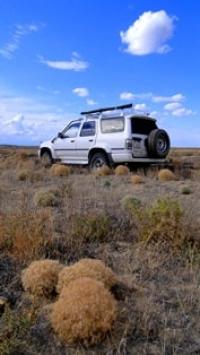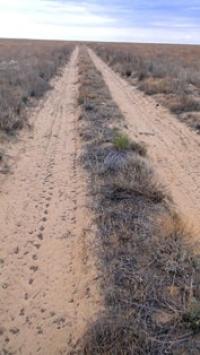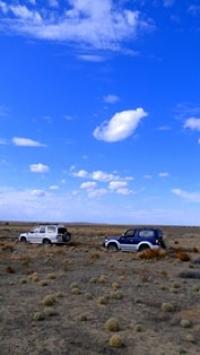Вы здесь
Aral Kara-Kum desert.



Tours across deserts of Kyzylorda region.
"What will be if to send to the desert
- Minus one vampire"
Moonlight.
Trip in desert Aral Kara-Kum.
Aral Kara-Kum are in a southwest part of Kazakhstan. The region, covers the territory of the Kyzylorda, Jambyl and Southern Kazakhstan regions, various landscapes. From the valley of the Syr Darya to deserts and steppes.
There is the greatest number of historical sights, medieval mausoleums, mosques and even ancient to Sairam in which the medieval downtown remained. Are located Aral Kara-Kum to the northeast of the Aral Sea, from the South it is limited to the Syr Darya River.
The most part of the territory of the desert is in borders of the Aral and Kazaly districts of the Kyzylorda region. Small part enters the southeast suburb of the Aktobe region and the southwest suburb of the Karaganda region.
The area represents the hilly plain, the general bias of the area - to the Aral Sea. Absolute marks of a relief - from 55 to 118 meters. The territory is occupied with the hilly sands fixed bushes by vegetation. Height of sandy hillocks and ridges of 5 - 25 meters, depth of cells - 3 - 8 meters.
Hollows are widespread on all territory, in many of which there are saline soils and takyr - the clay sites having the firm, cracked surface in dry season. During rains and thawing of snow of a takyr and saline soils and become almost impassable.
In the territory there are no rivers with a constant waterway. Water happens in gullies during thawing of snow and spring rains. Vegetation desert, is presented by herbs a feather grass, a wormwood, biyrgun, a tamarisk, dzhuzgun.
The camel prickle is widespread. The endemic species of a plant characteristic of Aral Kara-Kum - Borshchov tulip blossoming in April. The climate is sharply continental, droughty, with big fluctuations of seasonal and daily air temperatures, a low rainfall (about 120 mm a year).
Winter (the middle of November - the middle of March) with a partly cloudy and frequent fogs. Average air temperature in the afternoon −5 - 10 °C, at night to - 20 - 25 °C (minimum − 42 °C). Steady frosts begin in December.
In any month of winter thaw is possible. Rainfall drops out mainly in the form of snow. Snow cover is formed in the second half of December and keeps until the end of March; thickness it usually does not exceed 16 cm (in snow winters to 30 cm).
Average depth of frost penetration in soil of 1,3 m. Spring (the middle of March - April) warm with unstable weather in the first half. Air temperature at the beginning of a season in the afternoon −1 … - 10 °C, at night to −10 °C; at the end of a season in the afternoon to +25 °C, at night from −1 °C to +8 °C.
Rainfall drops out in the form of an intermittent rain, sometimes with the snow. The summer (May - the middle of September) is characterized by steady hot dry and slightly overcast weather. Air temperature in the afternoon of +30 +35 °C (maximum + 43 °C), at night temperature falls to +15 +18 °C.
In the summer often there are hot dry winds (dust storms) which kick up sand and dust in air. Fall (the middle of September - the middle of November) - in the first half dry and warm, in the second cloudy and cool.
Air temperature in the afternoon +5 + 25 °C, at night −5 + 5 °C. Rainfall drops out in the form of rains, in the second half of November the sleet drops out. Winds in the spring and in the summer mainly western and northwest, in the fall and in the winter east and northeast.
The prevailing wind 3 speed - 7 m/s. During the whole year (especially during the winter and spring period) strong gales with a speed of 15 m/s and more are often observed (45 days in a year). Average of days with the weather phenomena in a year: rainfall 54 (January 7, June 3), fog 26, blizzard 10, thunder-storm 12.
Number of clear days on the general overcast - 119, cloudy on the lower overcast - 17. Thanks to the high level of a bedding of ground waters (as in sandy deserts of draft filter into the soil, without managing to evaporate) in Aral Kara-Kum vegetation richer, than in adjacent clay deserts that creates favorable conditions for pasturable livestock production here (sheep breeding, camel husbandry).
There is a large number of wells and artesian wells for a cattle watering place, and in decreases in a relief serve as the shelter from strong winds, dust storms, blizzards. Thus, Aral Kara-Kum are actively and all the year round used for a cattle pasture.
Authority:
http://dic.academic.ru
Photos
Alexander Petrov.







